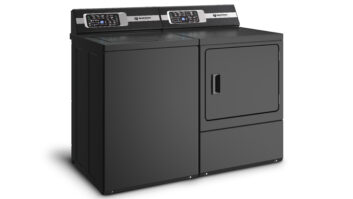Overland Park, Kan. — Sprint’s high wireless churn rates and shrinking share of gross subscriber additions won’t begin to improve until the second half of the year when the company’s disruptive network upgrades get closer to completion in more markets, Sprint CEO Dan Hesse.
During an investors’ conference call, Hesse also declined to comment on news reports that he informally pitched a Sprint-T-Mobile merger to federal regulators but was strongly rebuffed. Nonetheless, Hesse said, “I believe further consolidation in the U.S. wireless market outside the big two…would be healthy for the competitive dynamic.”
In speaking to Sprint’s performance, Hesse said elevated levels of dropped voice calls and blocked calls caused by network upgrades have “impacted customer satisfaction,” but churn is improving in the markets where the upgrades are largely complete.
Competitors offering bounties to consumers who switch carriers is also “having some impact” on Sprint’s subscriber additions, Hesse added.
As a result, Sprint’s net subscriber additions fell in the quarter and for the full year, and the company posted fourth-quarter and full-year wireless operating losses, though losses shrank by 27 percent and 11.6 percent, respectively.
In an update on the company’s network-upgrade rollout, Hesse said the company has rolled out 4G LTE in the 800MHz, 1.9GHz amd 2.5GHz bands to 340 markets covering more than 200 million people and that by mid-year, LTE coverage will expand to reach 250 million people.
The 2.5GHz spectrum, which has been used for 4G Mobile Wi-MAX service, has been converted to LTE in 13 markets, and 2.5GHz LTE will be operating in markets with 100 million people by year’s end to provide accelerated 4G speeds.
In the markets where LTE has been deployed on all three bands, download speeds have reached a peak 50Mbps to 60Mbps, the company said. The speeds will accelerate further late in the year as the carrier implements LTE’s carrier-aggregation capabilities, the company said.
The speed of tri-band service, called Sprint Spark, can be enjoyed with any of 10 tri-band Sprint devices currently available, including an updated Galaxy S4. All new postpaid smartphones that will be launched this year will be tri-band models.
Voice service on the 800MHz band will be expanded to most of the company’s footprint by mid-year, the company noted.
The rollout of HD Voice service will be complete by mid-year, the company added. Twelve million subscribers have HD Voice handsets.
Although Hesse forecasts improvement in subscriber acquisitions and churn rates, for now, the carrier’s losses continue to mount. The company’s full-year wireless net operating loss of $1.81 billion was the company’s sixth consecutive year of wireless operating losses. The quarter’s loss was $585 million.
Net wireless operating revenues rose 2.5 percent in the quarter to $8.48 billion and were up only 1.3 percent for the year to $32.8 billion.
The number of net new subscribers on the Sprint network, excluding the closed-down Nextel network, slipped slightly to 682,000 from the year-ago 683,000. For the year, the number of net new Sprint-platform subscribers fell dramatically to only 423,000 compared to 2012’s 4.77 million.
Only 58,000 of the net new subscribers were postpaid retail subscribers, and the rest were less-lucrative prepaid and wholesale subscribers. For the year, the number of net new retail postpaid subscribers fell by 96,000.
With the shut-down Nextel network included, the number of net new subscribers fell by 2.29 million compared to a 2012 net subscriber gain of 605,000.
Sprint posted wireless operating losses in 2008 through 2012, with 2012 losses at $2.1 billion, 2011 losses at $256 million, 2010 losses at $1.23 billion, 2009 losses of $1.96 billion, and 2008 losses of $2.8 billion.













